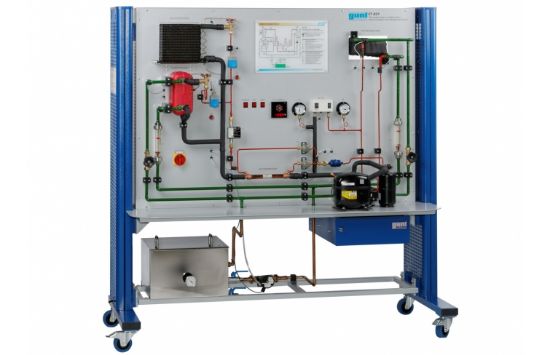Heat exchangers are an elementary part of refrigeration systems. During cooling they are used to absorb the energy of the refrigerant by evaporation. During heating they discharge the energy set free during the condensation of the refrigerant. They are also used for internal energy transfer during superheating or supercooling of the refrigerant.
Dependent on the media, a difference is made between air / refrigerant, water / refrigerant and refrigerant / refrigerant heat exchangers. Dependent on the constructive design, a difference is also made between coaxial, finned tube, plate or shell and tube heat exchangers.
The refrigeration circuit of the trainer ET 431 includes as evaporator an air cooling finned tube heat exchanger and a water-heated plate heat exchanger, as superheater a tubular heat exchanger, and as condenser a water-cooled coaxial coil heat exchanger. These heat exchangers are the ones used most commonly in refrigeration and fulfil different functions dependent on the system type. A finned tube heat exchanger can e.g. also be used as a condenser.
The components are arranged clearly at the front. By measuring the mass flow rates and the inlet and outlet temperatures the transferred energy fluxes can be determined.

